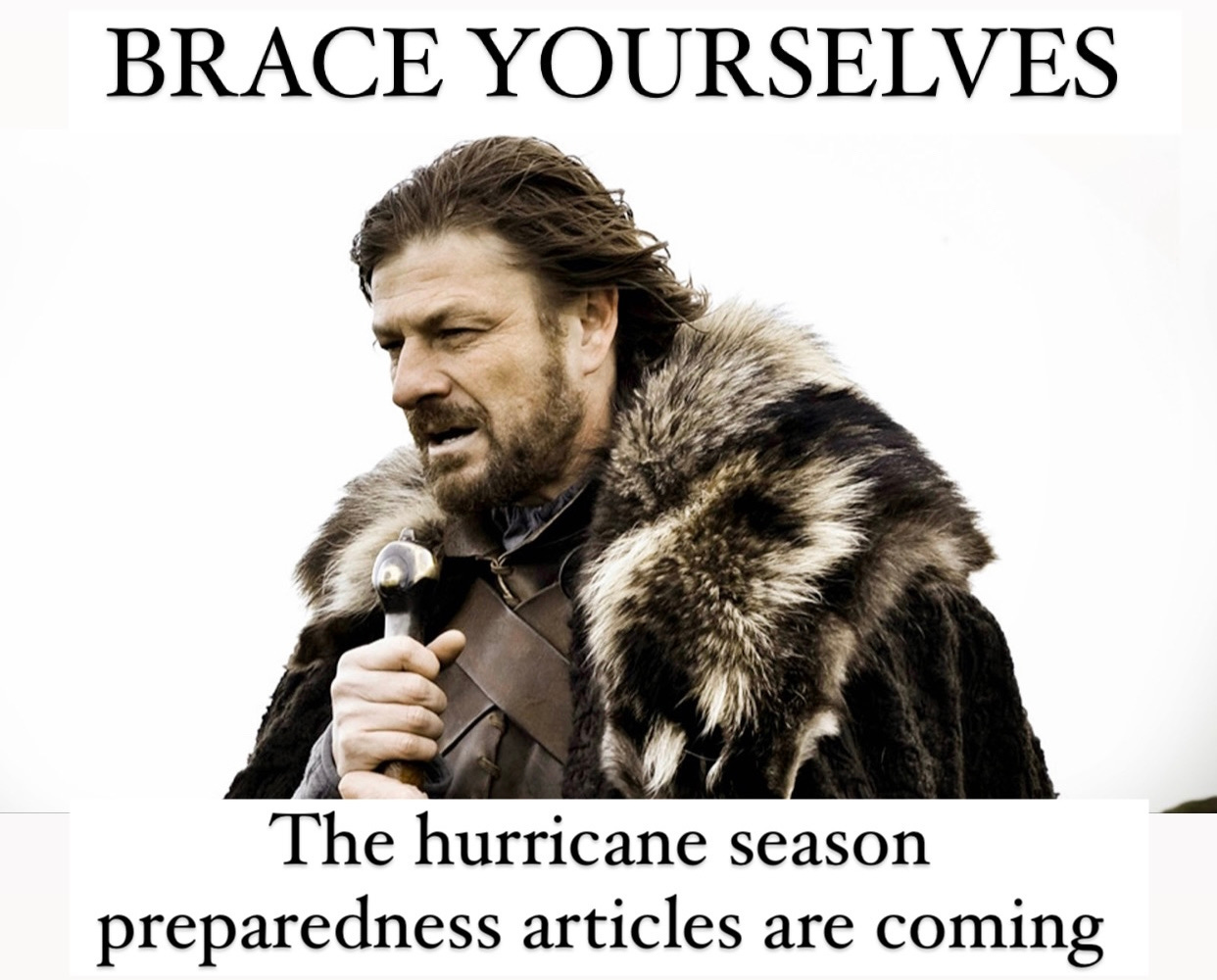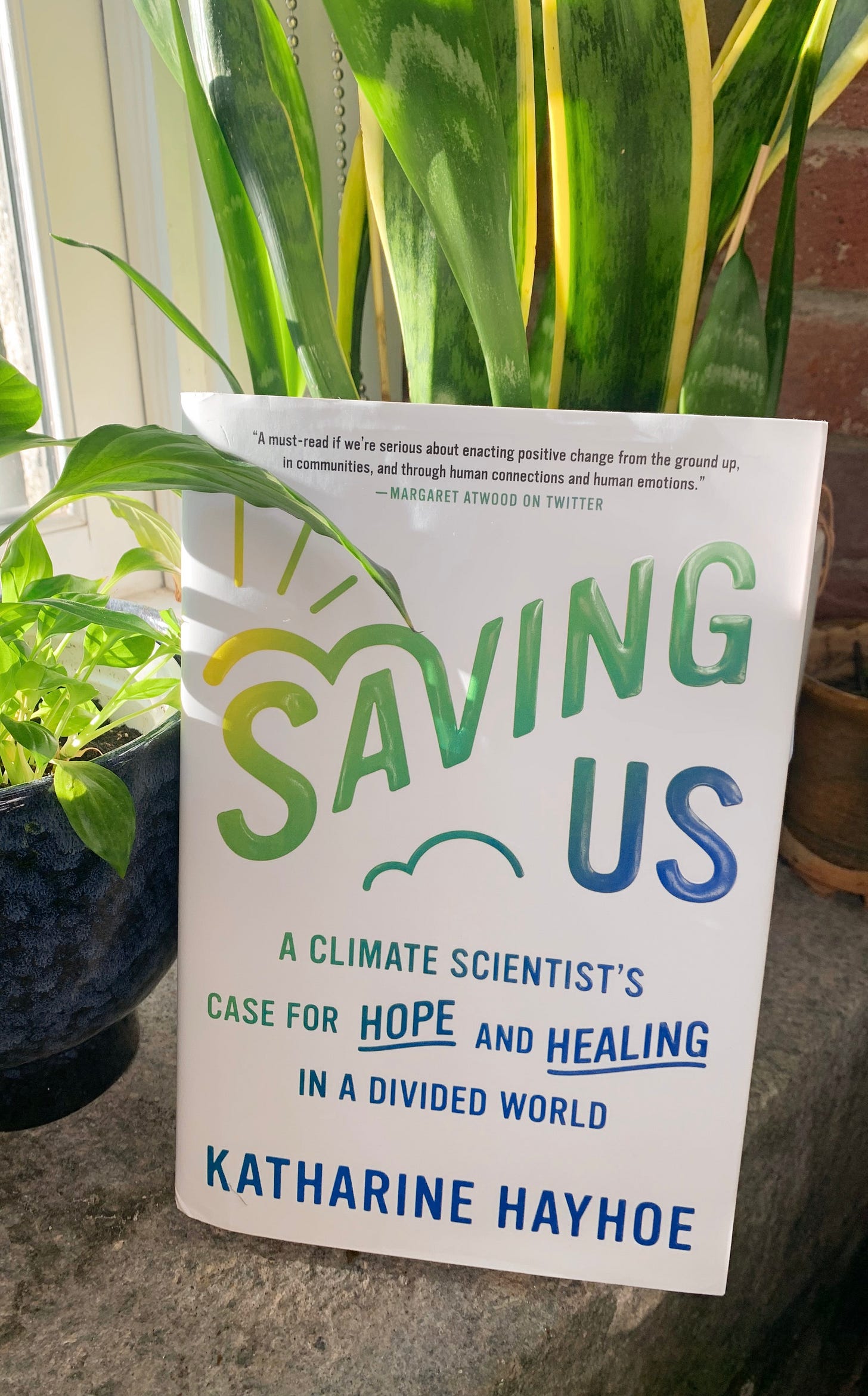April 2022
This newsletter is a compilation of recent disaster ~things~ that I think are cool, important, or otherwise of interest to people who are intrigued with disaster (broadly defined).
There’s a little something for everyone!
The State of Emergency Management
Good evening my little spring tulips!
Well, another month of turmoil and destruction is behind us! Let’s dig in.
There was a chemical plant leak in Louisiana and a bad tornado in Kansas. There’s a bad wildfire in New Mexico right now with evacuations underway. COVID still exists and you can find an article like this pretty much everywhere. There was terrible flooding in South Africa and the horrible heatwave across Pakistan and India continues.
I Hope You Like Feminist Rants Because…
Over the weekend a male emergency manager called me “honey” on Twitter. The reason for the condescension? I called him out for being rude to someone who was expressing their hope for a more inclusive future in emergency management. Sure.
This followed an email I received earlier in the week from someone I’d consider to be “a grumpy old guy” in emergency management. He went on, somewhat incoherently, for a while but his main thesis seemed to be, “actually there’s nothing wrong with emergency management”.
I wish these kinds of comments and e-mails didn’t happen but it’s also part of my normal day-to-day now. I think is important to talk about because I’m far from the only one to experience this. In fact, this was a topic of conversation for me this weekend during a talk I moderated with climate scientist Dr. Katharine Hayhoe (who I consider to be the queen of climate Twitter). An audience member asked us about being women in science which led to a discussion of the negative comments we receive online (which, in my experience, come from men 99.9% of the time). I’m quick with the block button.
These particular incidents were barely a blip on the harassment spectrum, but they did stand out to me because of something I’ve been helping with on campus. I teach at a school where our emergency management program has few women. I hope to see major changes in this over the next several years. For now, part of our strategy is to do more to support the women who are already in our program and are preparing to go out into male dominating fields. My colleagues and I have been working to put together a women’s group to provide a space for students to meet to talk about relevant issues and help connect them to women who are already out in the field doing the job they’d like to do. Tomorrow we are holding a small lunch on campus where our emergency management students can meet some other women in our field. It is in the scheme of things a relatively small gesture, but it is a big change. I had nothing like this when I first started doing disaster work.
Things are changing, I think, for the better in emergency management. They are. I know that. But man, it’s painfully slow going some days.
Deanne Criswell’s ascension into FEMA was certainly a deserved advancement for women in emergency management but we’ve still got BIG problems when it comes to gender (and race) equity in the field. Here’s a fun (not fun) example. The other day I was looking at a list of city/town level emergency managers in Massachusetts. Based solely on looking at first names, there appear to be 17 women. Seventeen. There are around 350 towns in Massachusetts. Seventeen. I have no indication of what race these 17 women are, but I am quite confident that they’re (mostly) white. BIG problems, y’all.
I think constantly about how this is the environment I’m sending my students out into. When I think about one of these men saying the things they say to me to my students… The rage I feel... Whew.
I was able to just block the guy who called me honey on Twitter, and I just ignored the grumpy email. But… I am in a position in my career where I can do that without repercussion. A lot of women can’t – especially young white women and women of color. I’ve been thinking a lot about the women that both of those men must work with. Do they treat them this way? I’m sure. What recourse do those women have? Change jobs? Stick it out? Take on the extra labor of navigating around their male co-workers who can’t simply be civil?
It’s a good sign, I think, that for every grumpy old guy e-mail, I get about five from people who want to change our field for the better – mostly younger people and mostly women.
Things are changing. I know. It’s slow, but it is.
Meme Break
From The Halls of Academia
A very important new study dropped last week and folks, it’s not the best news. Climate change is dramatically altering environmental conditions which are driving animal relocation and changing the likelihood of viruses spilling over and then making their way to us. This isn’t just a future threat. This research shows it’s already happening. Science journalist extraordinaire Ed Yong wrote a good summary of the research in his article for The Atlantic, “Pandemicene”.
“Carlson and Albery drolly nicknamed their study “Iceberg,” denoting a huge and mostly hidden threat that we unwittingly collide with. Indeed, their simulation revealed that mammalian viruses have already been dramatically reshuffled, to a degree that likely can’t be undone even if all carbon emissions cease tomorrow.”
As we’ve learned during COVID, this isn’t just a problem for public health, it’s a problem for emergency management too. Time to update the hazard assessments, friends.
You can read the full study for yourself here.
Book of the Month
Saving Us: A Climate Scientist’s Case For Hope and Healing in a Divided World by Dr. Katharine Hayhoe
As I noted earlier, I had the pleasure of talking with Dr. Hayhoe this past weekend about her new book. The main thesis of the book is that we need to talk to each other if we are going to be able to move forward to address climate change. Dr. Hayhoe walks you through ways to have these conversations depending on who you are talking too. I think this is a really useful book for emergency managers and others in the disaster field who are trying to figure out how to talk about climate change in their work.
You can learn more about the book from Dr. Hayhoe’s appearance on Jimmy Kimmel and you can buy it here.
Important Disaster Media Coverage This Month
I’d like to draw your attention to this really useful ‘Disaster Glossary’ that Southerly has put together to help people understand emergency management terms (and acronyms). I think it is REALLY useful and something that agencies can share too.
Mitigation
Fires, then floods: Risk of deadly climate combination rises by Raymond Zhong in the New York Times
I would have never bought this home if I knew it flooded by Elizabeth Rush in the New York Times
Newsom hailed this ‘critical’ wildfire-prevention program. Two years on, it hasn’t completed a single project by Scott Rodd for CapRadio
The razor’s edge of a warming world by Emily Atkin & Caitlin Looby for GQ
Preparedness
The tiny Fraser Canyon First Nation with big plans to help evacuees by Tyler Olsen in the Fraser Valley Current
Advocates say people with disability are increasingly ‘forgotten’ in emergency planning by Eden Gillespie for The Guardian
Preparing for a cyberattack starts at the local level by Clara Decerbo, Grace Hindmarch, Aaron Clark-Ginsberg for The Rand Blog
Emergency managers prepare for active hurricane season by Suzette Porter for Tampa Bay Newspapers
Response
Virginia agencies failed to see depth of I-95 meltdown, report says by Luz Lazo, Micahel Laris, and Laura Vozzella for The Washington Post
‘We became like a big startup.’ How Kyiv adapted the city’s tech to save lives by Vera Bergengruen for Time
Now’s not the time to dispense with covid-19 precautions by Lucky Tran and Oni Blackstock for The Washington Post
As Lake Powell dries ups, the US turns to creative accounting for a short-term fix by Jake Bittle for Grist
The End Bits
I would love it if you’d forward this to your friends, post on social media, and undertake any other form of newsletter sharing you deem appropriate. They can sign-up here.
In case you signed up for this newsletter without knowing who I am (a bold choice!) you can read my book Disasterology: Dispatches From The Frontlines of The Climate Crisis to catch up! You can read a USA Today review here, order it here, or get it as an audiobook here. You can also find more from me on my blog, listen to this episode of Ologies, or follow me on Twitter and Instagram where I impulsively narrate my every thought.
Finally, this newsletter is ~FREE~. I plan on keeping it that way because eliminating barriers to disaster knowledge is important. However, I’ve created a “paid subscriber” option for $5 a month or whatever you’d like to give if you’re interested in supporting this work.


